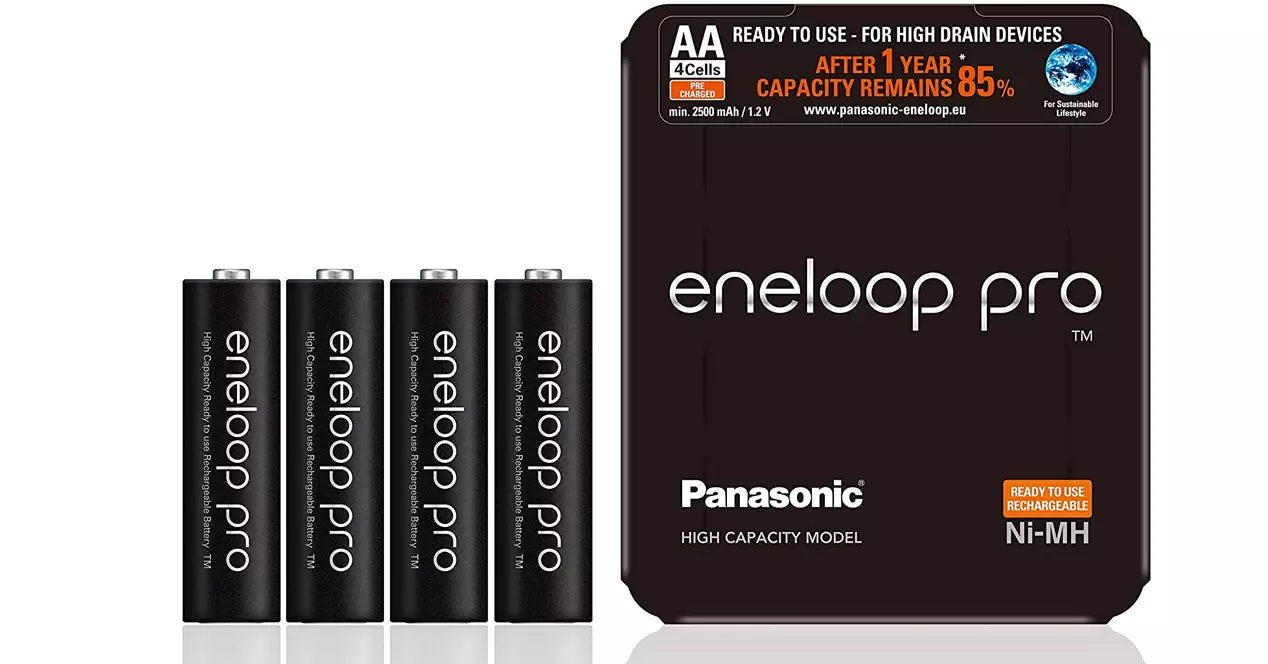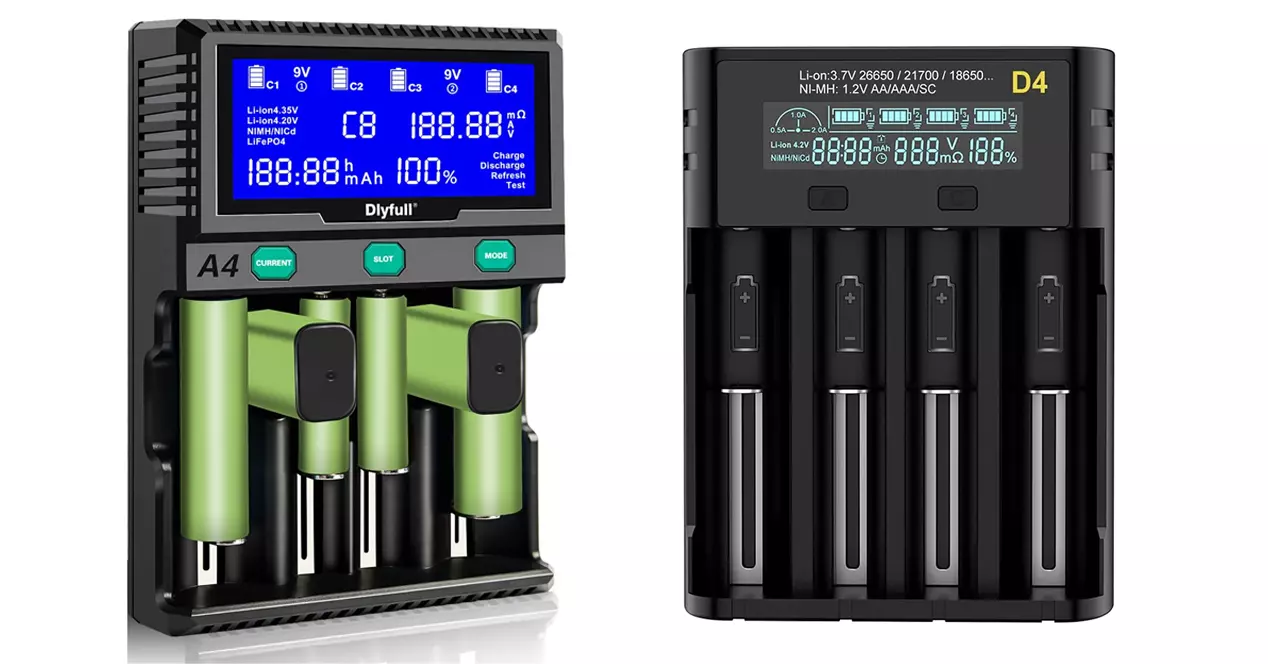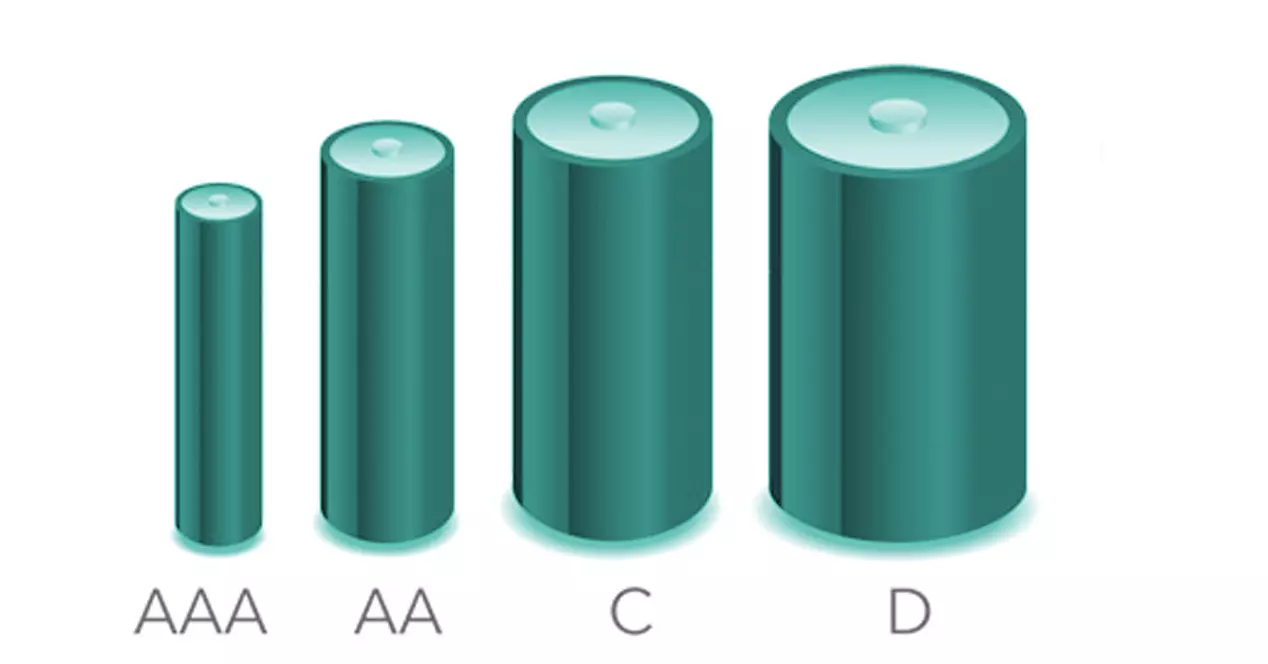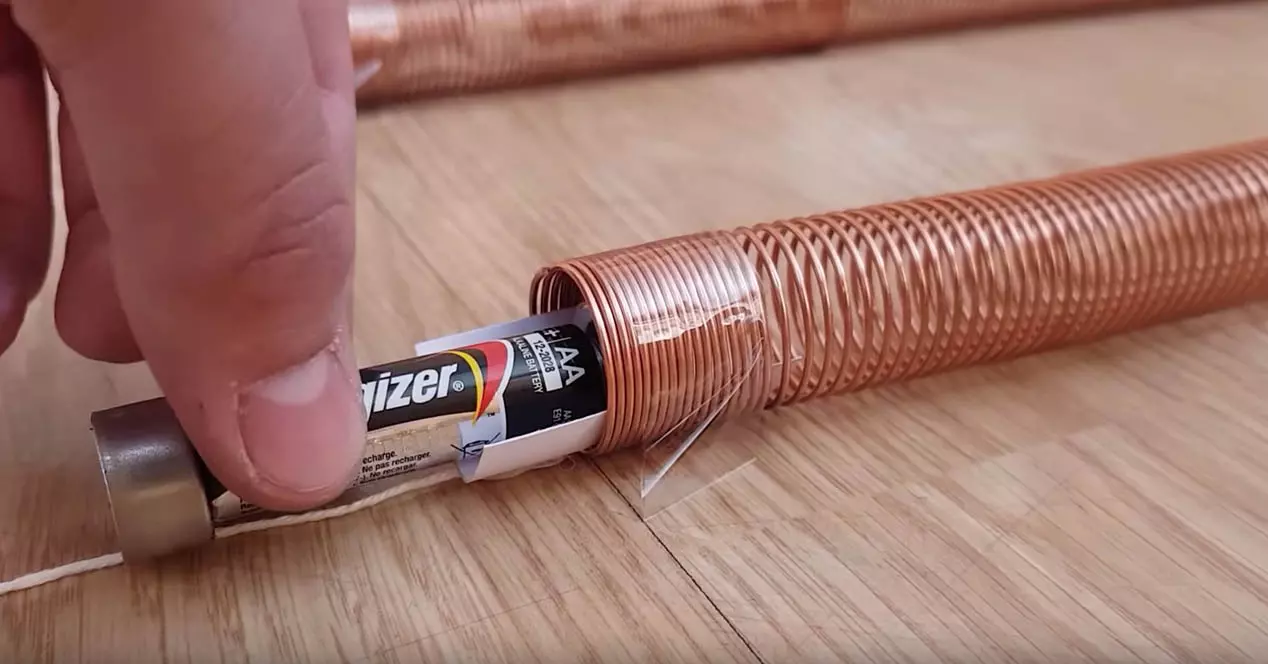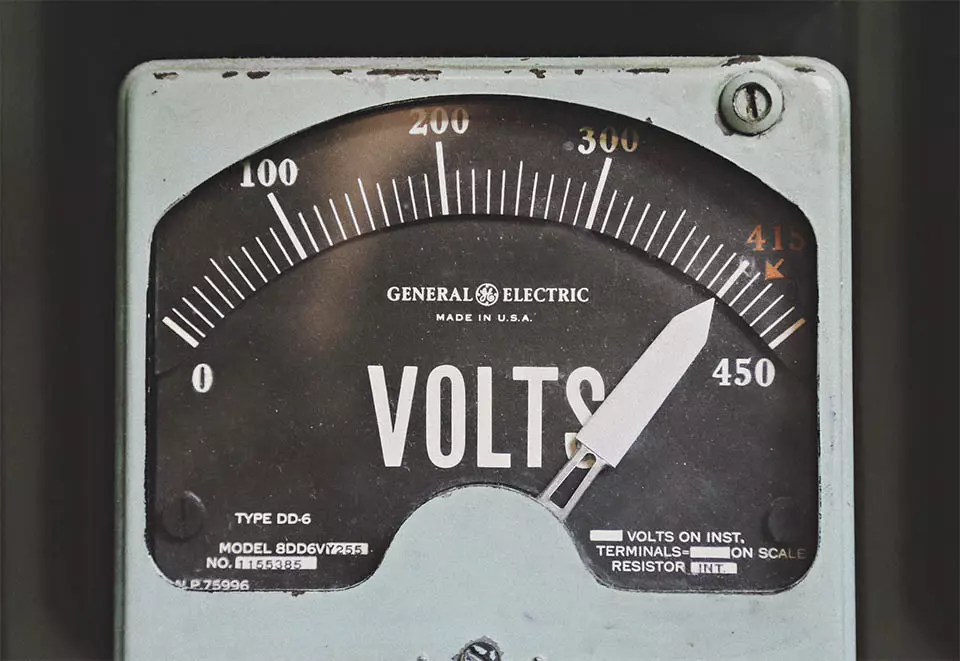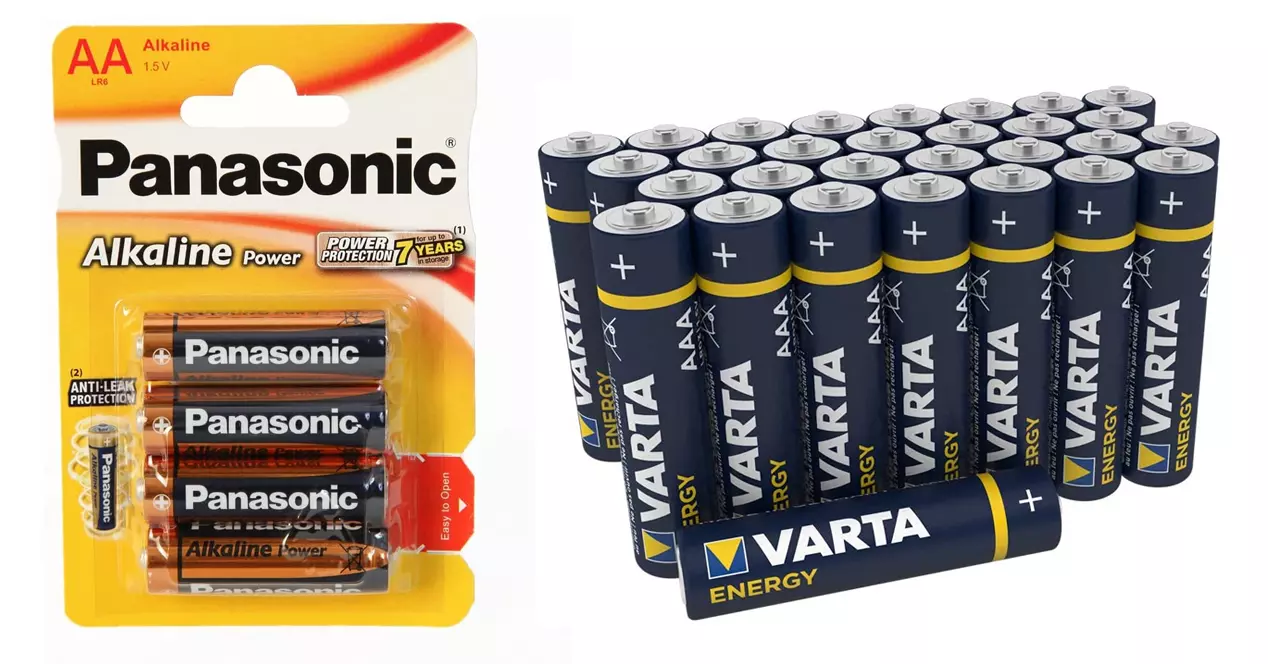
What types of batteries exist and what exactly are they used for?
we all know they exist various types of batteries, but we have not necessarily investigated what each of these types is for. Sometimes, when we are in front of the supermarket shelf, we choose the cheapest ones, not taking into account that the price will directly affect the useful life of the battery.
Mainly, we can differentiate between disposable and rechargeable batteries. The correct term for this second type would be ‘batteries’, but we usually call them batteries because they maintain the same format and voltage. On the other hand, disposable batteries are divided into saline and alkaline. And yes, there are quite a few differences between these two types.
salt piles
If you see a pack of four batteries for one euro, you don’t need to check it out; they are saline These batteries are cheaper and also the ones that last the least of all. They work by oxidizing zinc chloride. You should use them in devices that do not demand a lot of energy, but little else. If you use them in a demanding electronic product, they will run out in record time. Normally, the packaging of this type of batteries does not usually indicate that they are saline.
alkaline batteries
The electrolyte used to make alkaline batteries is the potassium hydroxide. Under equal conditions with the saline ones, the alkaline ones concentrate a higher energy density, which translates into a longer product life. They are less economical than salt pans, but they tend to compensate for their price considering their durability.
The alkaline ones, together with the rechargeable ones that we will see now, are the most suitable batteries for devices that demand a considerable amount of energy or if you are simply looking to avoid having to constantly change the batteries in a device.
Rechargeable batteries
There are several types of rechargeable batteries. They have the same format as saline or alkaline batteries, they keep the same voltage, but allow to be recharged hundreds or thousands of times. Depending on the technology that these batteries have, they will cost us more or less money. Still, they are substantially More expensive than alkaline. Depending on the model that we buy, we will be interested in recharging them with a generic charger or with a specific one that allows us to control the intensity of charge or test them to avoid the memory effect of the batteries.
Another great advantage of this type of batteries is that they have a lower environmental impact, since they have a much longer useful life than disposable batteries. These are the types that exist:
- Nickel-Cadmium (NiCd): You can still find rechargeable batteries with this formula, but they are starting to disappear in favor of NiMH. These batteries typically have an average life of 1,000-1,500 charge cycles. On the other hand, cadmium is a fairly polluting compound. In addition, these batteries tend to suffer from the famous memory effect very easily, so each use usually means a slight decrease in the total charge capacity. Even so, the effect is reversible if we use the appropriate charger.
- Nickel-Metalhdride (Ni-MH): without a doubt, the best rechargeable battery you can buy in terms of quality-duration-environmentalism-price. By removing cadmium from the equation, these batteries significantly lowered their cost, also improving their recycling. The impact of the memory effect is also less in these models, although they also self-discharge more easily (30% per month, always keep that in mind). They usually last up to 2000 cycles. Within this group, LSD-NiMH batteries also emerged, which have a lower self-discharge rate.
- Lithium Ion (Li-Ion): They use the same technology as the battery of your mobile phone. They do not have a memory effect, they do not suffer from the self-discharge phenomenon, but they are much more expensive than Ni-MH batteries. They’re also very sensitive to heat, so they’re not suitable if you’re going to be working on a device that gets hot or on a device that constantly forces battery recycling. If you’re going camping, a 12 volt lithium battery for example would be a very good choice as it is reliable.
To recharge one of these batteries, you will need a charger specific. Many battery kits already come with their own basic charger. However, if you are going to switch to rechargeable batteries and you are going to make an investment, it is best to buy a advanced charger with display. The normal thing is that you buy a good handful of Ni-MH batteries – lithium ones are exaggeratedly expensive today. These chargers allow you to test, discharge, charge and eliminate the memory effect of the batteries automatically. In addition, they have different programs to charge at a higher or lower speed, this being very useful to extend the life of the batteries, since a charge at 200-500 mAh will cause your battery to degrade less than if you always charge it at 2000 mAh, for example.
What to check before buying a battery?
- Format: Most batteries are usually 1.5 volts. Nevertheless. There are devices that require AA, AAA, C or D batteries – the latter are the typical ones used in toys. The voltage in these cases is identical, what varies is the capacity of the battery.
- Chemical composition: saline or alkaline in the case of disposable ones or the corresponding technology in the event that we opt for rechargeable ones. We must take into account its virtues and drawbacks. Returning to the topic of toys, the most correct thing to do is to use an alkaline one in case you opt for disposable batteries —unless they are going to go inside the typical noisy toy, of course—.
- load cycles: Rechargeable batteries usually indicate more or less the total useful life of the product expressed in charge cycles. A cycle is considered to be the act of discharging and charging the battery.
- Ability: The disposable ones will rarely give you this data, but in the rechargeable ones, it is quite common that they express this data in milliamp hours. If this is not the case, with a good battery charger you will be able to see the total capacity of a specific unit.
What is the best battery on the market?
If at this point in life you don’t trust what the ads tell you, you’re doing the right thing. No manufacturer is ever going to tell you that their batteries perform worse than those of the competition. So is there any way to measure if one stack is better than another?
Well yes, and that’s what the youtuber did Mr Michal with a very simple example. used only three modelsbut the experiment serves to understand what characteristics stand out from each of the brands.
Mr.Michal used well-known brands on the market. As you can see, the experiment is based on the use of a spiral of copper wire in the form of a worm, two neodymium magnets and the batteries in question. The magnets should be slightly larger in diameter than the thickness of the battery, and as you can see, they should fit perfectly through the copper spiral.
The placement of the two magnets in the battery causes the generation of an electric field which, together with the conductivity of copper, gives life to a homopolar motor Very simple. Taking this phenomenon into account, we can use the reactions to compare the performance of each cell under equal conditions, just as Mr.Michal has shown in his video.
In the tests it has used batteries of energy, Varta and Duracell. The tests carried out consisted of a closed circuit that consumed the entire battery in a timed time, a “speed track” to measure the power output and a track with resistance to see which battery best resists a negative force.
What results did the test give?
The results obtained are quite interesting, since we can see how the stack of Duracell proved to be the battery that greater autonomy offered in the closed circuit, reaching 37 minutes and 24 seconds compared to 27 and 26 minutes for Varta and Energizer respectively.
On the other hand, as far as power is concerned, the model of Varta completed the circuit on the straight faster thanks to an initial push from higher powerleaving Duracell and Energizer in second and third place respectively.
The experiment could be repeated with any brand we can imagine and would allow classify them in autonomy and initial power. The autonomy would be interesting for a remote control or a console, for example. However, batteries with a greater pull would be more suitable for devices that have a very high peak consumption, such as a handheld flash, although in these cases, it is best to get a rechargeable battery that also stands out in this regard.
